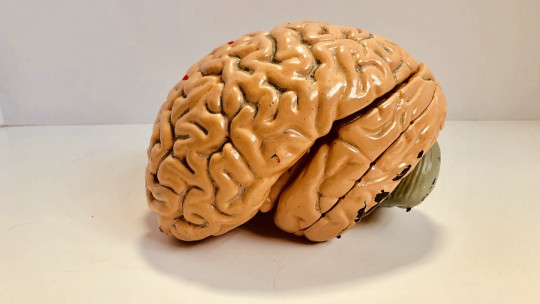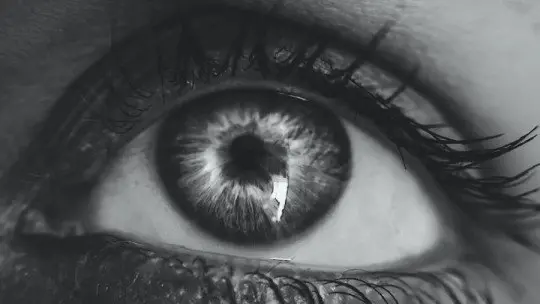
We know that reality can be interpreted in infinite ways, and that there is no “single reality.” However, it is also true that distorted information processing can cause dysfunctional and erroneous thoughts, which can cause significant discomfort to the person who has them.
To address them, cognitive therapy is usually the most used. In this article we will learn about the characteristics of dysfunctional thoughts how they originate, as well as four effective techniques that allow you to work on them and eliminate them, replacing them with more realistic and functional thoughts.
Dysfunctional thoughts can significantly impact our mental health and overall well-being. These negative thinking patterns often lead to feelings of anxiety, depression, and low self-esteem. Understanding what dysfunctional thoughts are, recognizing their signs, and learning how to overcome them is crucial for fostering a healthier mindset. We explore the nature of dysfunctional thoughts, their effects, and effective strategies to manage and reframe them.
What Are Dysfunctional Thoughts?
Dysfunctional thoughts are irrational, negative, or unhelpful patterns of thinking that distort our perception of reality. They often lead to negative emotions and behaviors, affecting our mental and emotional health. Understanding these thoughts is the first step towards overcoming them and improving your overall well-being.
Dysfunctional thoughts are patterns of thinking that lead to distorted interpretations of reality. These thoughts are often characterized by their negativity and irrationality, which can create a distorted view of situations and oneself.
Common Types of Dysfunctional Thoughts
- Catastrophizing: Expecting the worst possible outcome in any situation, leading to excessive worry and fear.
- Black-and-White Thinking: Seeing things in extremes, such as thinking in terms of all-or-nothing, with no middle ground.
- Overgeneralization: Making broad, sweeping conclusions based on a single event or limited evidence.
- Mind Reading: Assuming you know what others are thinking without any concrete evidence, often leading to unnecessary stress.
- Personalization: Taking responsibility for events or situations that are beyond your control, often resulting in self-blame.
Dysfunctional thoughts: definition and characteristics
Dysfunctional thoughts, also called automatic thoughts or negative automatic thoughts (PAN’s), are a concept proposed by Aaron T. Beck a prominent American psychiatrist and professor.
A. Beck He was a pioneer in cognitive counseling within the field of psychology, as well as in cognitive therapy, and described dysfunctional thoughts as a result or product of distorted processing of reality. According to Beck, this erroneous processing (which he calls cognitive distortion) ends up giving rise to a series of thoughts that do not benefit the patient, and that end up distancing them from the more “objective” reality.
The basic characteristics of dysfunctional thoughts are the following: they are specific, concrete messages; They are believed by the person despite being irrational and not based on evidence, and they are spontaneous, involuntary thoughts and, therefore, difficult to control.
An example of dysfunctional thinking would be thinking: “If I go to the pool I will have a terrible time” (because I have already gone before and had a bad experience), or “I’m worthless”, “I’m sure the presentation will be terrible.” ”, “No one likes me because everyone looks at me badly”, etc.
That is to say, They end up being thoughts that do not bring anything good to the patient (which is why they are dysfunctional), which generate unnecessary discomfort and only perpetuate more dysfunctional thoughts.
How do they originate?
As we have seen, to get to the dysfunctional thoughts, the previous information processing must be erroneous (or being distorted): these are Beck’s so-called cognitive distortions.
Thus, the way of thinking of a person with dysfunctional thoughts will be characterized by the presence of systematic errors in the processing of information, which implies that reality is interpreted incorrectly, or that we focus only on a part of it to evaluate a more global aspect, etc.
How do they operate in the mind?
There are many types of dysfunctional thoughts, depending on their characteristics. Furthermore, a common characteristic of dysfunctional thoughts is that end up favoring the perception and memory of stimuli congruent with the erroneous schemes ; That is to say, the person ends up focusing only on the aspects of reality that are already distorted, entering into a kind of “vicious circle.”
In this way, the following would occur: the person misinterprets reality (drawing erroneous conclusions, for example), pays more attention to the distorted aspects of it, and also remembers them more compared to other non-distorted aspects.
Dysfunctional thoughts They can appear in “healthy” people and in people with a depressive or anxious disorder for example (in these last two cases, these thoughts tend to be more frequent, intense and numerous).
The result, both in healthy people and in people with a mental disorder, is usually similar (although it varies in intensity), and is a distorted vision of reality, which gives rise to a negative, maladaptive state or with depressive symptoms and/or anxious
How can they be treated in therapy?
Psychological therapy, specifically cognitive therapy, is indicated to treat dysfunctional thoughts, especially when they are causing problems and/or significant discomfort to the person who has them.
From this, it is intended help the patient develop a set of basic assumptions and more realistic thoughts which allow you to make inferences and evaluations of the life events most appropriate to your objectives.
Cognitive therapy is a good option to treat and modify dysfunctional thoughts. This therapy is used especially with patients who have depression, and who also present notable dysfunctional thoughts.
Cognitive therapy It is usually used when the patient already has a certain level of functioning ; We emphasize this, because in the initial phases of depression, and even more so if it is severe, it is common for the person to appear totally apathetic and unwilling to do anything; That is why at first it is better to opt for behavioral techniques that activate the patient, and then gradually incorporate cognitive techniques.
Cognitive techniques are based on guided discovery (also called collaborative empiricism), which offers the patient an active role in his recovery and improvement, and in which the therapist will gradually help the patient so that he himself finds his own solution, as autonomously as possible.
Specific techniques
Within cognitive therapy, we find different techniques or tools that we can use to treat dysfunctional thoughts Some of them are:
1. Daily record of automatic thoughts
Dysfunctional thoughts are also called automatic thoughts or negative automatic thoughts. As we have seen, they consist of thoughts and images that are usually distorted, and that usually have a negative character for the patient.
They originate from the interaction of the information provided by the environment, the patient’s schemas, their beliefs and the cognitive processes they use. Is about thoughts that are easily accessed (automatic) at the level of consciousness (that is, they come to mind quickly and automatically, practically without being processed). Thus, automatic thoughts are usually negative (Negative Automatic Thoughts (NAP)), especially in depression.
The registration of PAN is a technique that is usually used in the first sessions of cognitive therapy, and that It involves the patient recording the dysfunctional thoughts they have on a daily basis at every moment, with the aim of making you aware that you have them, and clearly identifying what they are. This technique is initially applied to complement it with others that allow exploring these dysfunctional thoughts.
2. Search for alternative interpretations/solutions
This second technique allows the patient to investigate new interpretations or solutions to complex situations.
Within it, the “two column technique” is usually used, where the patient has two record columns; In one of them he writes the original interpretation or dysfunctional thought that he has in relation to a situation, and in the other he writes possible alternative interpretations.
This can help you explore new ways of interpreting things (more functional and adaptive ways), away from the initial dysfunctional thoughts that caused you discomfort and emotional states that you did not understand.
3. Four questions technique
This technique part of questioning the evidence in favor of maintaining a certain dysfunctional thought to generate more realistic or useful interpretations. To do this, the patient is asked these questions:
From the patient’s responses, dysfunctional thoughts can be worked on; explore why they originate, what determinants precede them, what alternative thoughts exist, etc.
Furthermore, the four questions technique facilitates the patient to maintain an active role in the therapeutic process questioning himself the veracity of his thoughts and looking for alternative explanations.
4. Three column technique
This technique allows identifying the patient’s cognitive distortions (remember, a type of processing that ends up giving rise to dysfunctional thoughts), to subsequently modify the patient’s distorted or negative cognitions.
It consists of a table with three columns on a piece of paper: in the first column, the patient records the cognitive distortion they have (after a process of teaching them), in the second, they write the dysfunctional thought that this distortion generates, and in the third write an alternative thought, which will replace the dysfunctional thought.
Dysfunctional thoughts can have a significant impact on your mental and emotional health, but understanding and addressing them is within your reach. By recognizing the signs, employing effective strategies, and seeking professional help when necessary, you can overcome negative thinking patterns and foster a healthier, more positive mindset. Remember, overcoming dysfunctional thoughts is an ongoing journey, but with dedication and support, positive change is achievable.
The Impact of Dysfunctional Thoughts
Understanding how dysfunctional thoughts affect your life is crucial for addressing and managing them effectively. These thoughts can lead to a range of negative consequences that impact both your emotional and physical health.
Emotional Consequences
Dysfunctional thoughts can lead to various emotional issues, including anxiety, depression, and chronic stress. These negative emotions often reinforce the dysfunctional thoughts, creating a cycle that can be difficult to break.
Behavioral Effects
Negative thinking patterns often result in unhelpful behaviors, such as avoidance, procrastination, and self-sabotage. These behaviors can affect your personal and professional life, leading to a decline in overall quality of life and productivity.
Physical Health Implications
Chronic negative thinking can also affect your physical health. Stress and anxiety from dysfunctional thoughts can lead to symptoms such as headaches, fatigue, and digestive issues. Over time, these symptoms can contribute to more serious health problems.
Recognizing Dysfunctional Thoughts
Identifying dysfunctional thoughts is the first step toward managing and overcoming them. Being aware of these patterns can help you address them more effectively and work towards a healthier mindset.
Identifying Thought Patterns
Pay attention to recurring negative thoughts and patterns. Keeping a journal of your thoughts can help identify common themes and triggers that contribute to dysfunctional thinking.
Emotional Triggers
Notice the emotions that accompany your dysfunctional thoughts. Negative emotions such as fear, anger, and sadness can be indicators of irrational thinking patterns that need to be addressed.
Impact on Daily Life
Assess how dysfunctional thoughts impact your daily life and relationships. These thoughts often lead to conflicts, social withdrawal, and decreased motivation, affecting your overall satisfaction and well-being.
Strategies to Overcome Dysfunctional Thoughts
Several strategies can help you manage and overcome dysfunctional thoughts. Implementing these techniques can lead to a more balanced and positive mindset.
Cognitive Behavioral Techniques
Cognitive Restructuring
Cognitive restructuring involves challenging and changing irrational thoughts. Question the evidence for and against your thoughts, and consider more balanced perspectives to counteract negative thinking.
Thought Stopping
Use thought-stopping techniques to interrupt and redirect your thinking. Techniques can include visualizing a stop sign or using a specific word or phrase to halt the thought and replace it with a more constructive one.
Mindfulness and Meditation
Practicing Mindfulness
Mindfulness involves staying present and fully engaging with the current moment. This practice helps reduce the impact of dysfunctional thoughts by shifting focus away from negative patterns and promoting awareness.
Meditation Techniques
Regular meditation can calm the mind and increase awareness of your thoughts. Techniques such as guided meditation or deep-breathing exercises can help manage and reframe negative thinking patterns.
Positive Affirmations
Developing Affirmations
Create positive affirmations that counteract your negative thoughts. These affirmations should be realistic and specific, focusing on your strengths and positive qualities to reinforce a positive mindset.
Using Affirmations Daily
Incorporate positive affirmations into your daily routine. Repeat them in the morning, throughout the day, and before bed to reinforce positive thinking and challenge irrational thoughts.
Seeking Professional Help
Therapy and Counseling
Consider seeking the help of a therapist or counselor if dysfunctional thoughts significantly impact your life. Cognitive-behavioral therapy (CBT) is particularly effective for addressing and managing negative thinking patterns.
Support Groups
Joining a support group can offer a sense of community and shared experiences. Group members can provide encouragement and practical advice for overcoming dysfunctional thoughts and improving mental health.
Preventing Dysfunctional Thoughts
Preventing the onset of dysfunctional thoughts involves adopting healthy lifestyle choices and building resilience. These practices can help maintain a positive mindset and reduce the likelihood of negative thinking patterns.
Healthy Lifestyle Choices
Regular Exercise
Engaging in regular physical activity can improve mood and reduce stress, making it easier to manage dysfunctional thoughts. Aim for activities such as walking, jogging, or yoga to support mental well-being.
Balanced Diet
A healthy diet supports mental and physical health. Eating a balanced diet rich in fruits, vegetables, and lean proteins can help maintain overall health and well-being, reducing the impact of negative thinking.
Building Resilience
Stress Management Techniques
Develop effective stress management techniques, such as deep breathing exercises, progressive muscle relaxation, and time management skills. These techniques can help prevent the onset of dysfunctional thoughts and promote a balanced mindset.
Emotional Support Networks
Cultivate strong emotional support networks by maintaining relationships with friends, family, or mentors. Having a supportive community can provide reassurance and different perspectives, helping to counteract negative thinking patterns.
Continuous Self-Reflection
Regular Self-Assessment
Set aside time each week for self-reflection and assessment. Evaluating your thoughts and emotions regularly can help you stay aware of your thinking patterns and make necessary adjustments.
Journaling Practices
Keep a journal to track your thoughts and feelings. Reflecting on your journal entries can help identify progress and areas that need further attention, providing insight into your mental and emotional well-being.
FAQs
What are dysfunctional thoughts?
Dysfunctional thoughts are irrational, negative, or unhelpful patterns of thinking that distort our perception of reality and often lead to negative emotions and behaviors.
How do dysfunctional thoughts affect my well-being?
Dysfunctional thoughts can lead to emotional consequences such as anxiety, depression, and stress. They can also result in unhelpful behaviors and impact physical health, leading to symptoms like headaches and fatigue.
What strategies can help overcome dysfunctional thoughts?
Effective strategies include cognitive restructuring, mindfulness and meditation, positive affirmations, and seeking professional help through therapy and counseling.
How can mindfulness help with dysfunctional thoughts?
Mindfulness helps by keeping you present and engaged with the current moment, reducing the impact of negative thinking patterns. Regular practice can increase awareness and manage dysfunctional thoughts more effectively.
When should I seek professional help for dysfunctional thoughts?
Seek professional help if dysfunctional thoughts significantly impact your daily life, relationships, or overall well-being. A therapist can provide personalized strategies and support for managing and overcoming these thoughts.








